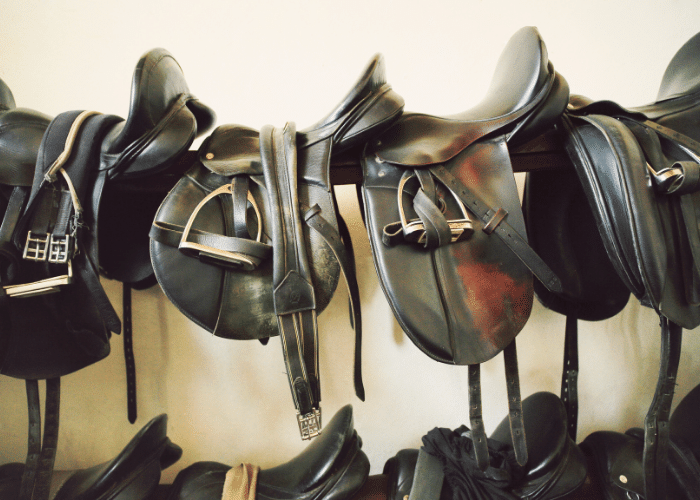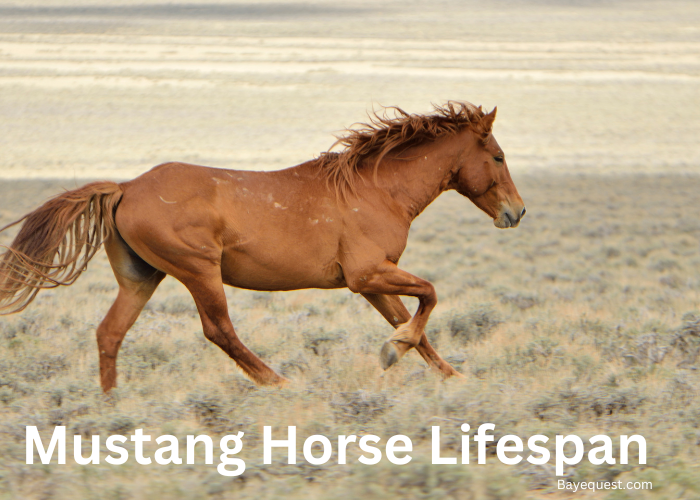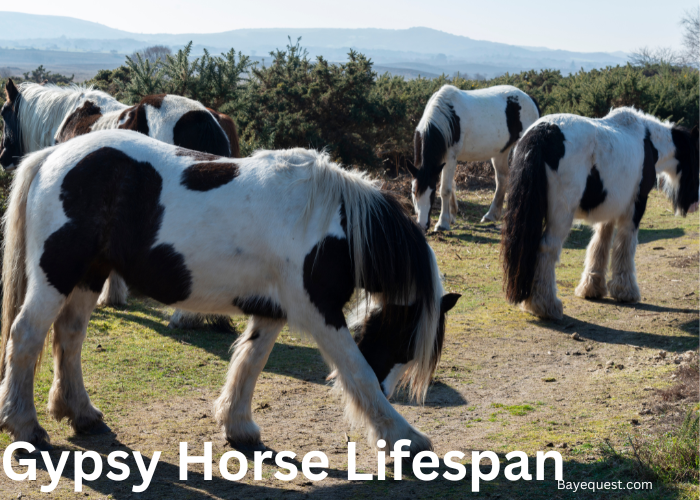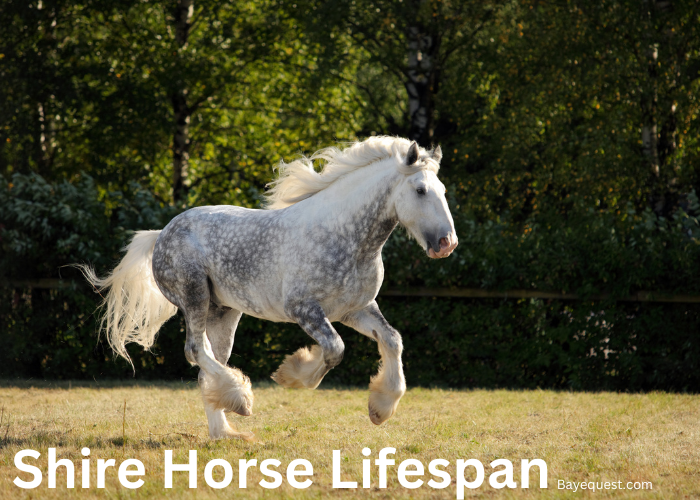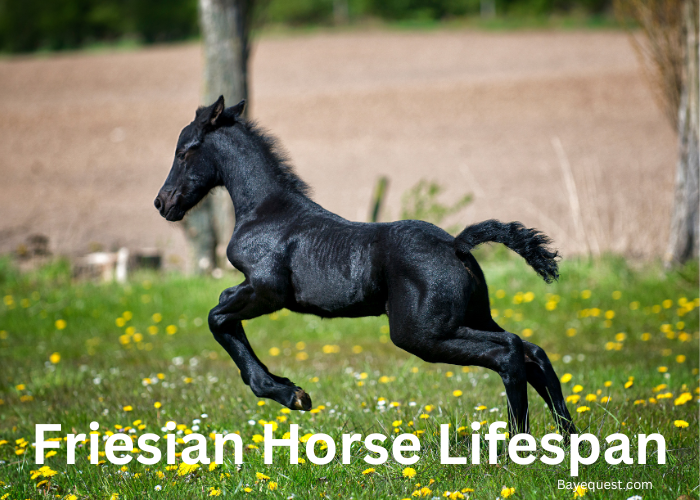Did you know that the saddle you choose can make or break your riding experience? With over a decade of experience in equestrian sports, I’ve seen how the right saddle transforms comfort and performance.
Many riders struggle to find the perfect fit, leading to discomfort and even injury. In this article, we’ll explore the various types of saddles, helping you find the ideal one for your needs.
From dressage to trail riding, we’ve got you covered. Let’s dive in and discover the saddle that will enhance your ride.
Types of Horse Saddles: Key Takeaway
- Roping saddles
- Reining saddles
- Barrel racing saddle
- Trail saddles
- Show saddle
- Cutting saddle
- Pleasure saddle
- Ranch saddle
- Wade saddles
- Dressage saddles
- Jumping saddles
- Eventing/Cross-country saddle
- Hunter saddle
- Racing saddle
- Training saddle
- Endurance saddle
- Side saddle
- Treeless saddle
- Gaited horse saddle
- Polo saddle
- Australian stock saddle
- Mounted shooting saddle
- Therapeutic saddles
- Para-equestrian saddle
What are the Parts of a Saddle?
Let’s break down a saddle, piece by piece like we’re exploring a treasure map.
First up, the seat. This is your throne, where you sit. It’s shaped to give you a snug, secure spot, ensuring a comfortable ride.
Next, we have the stirrups. Think of these as your footrests, hanging down from each side. They’re where you place your feet, helping you balance and stay in place.
Holding those stirrups up are the stirrup leathers (on an English saddle) or fenders (on a Western saddle). These are like the adjustable straps that let you set how high or low your feet hang.
The pommel is up front. It’s that raised part you see at the saddle’s front. It gives your hands something to hold onto if you need it and helps distribute the saddle’s weight properly.
Right at the back, we have the cantle. It’s the rear edge that curves up a bit, offering back support and keeping you from sliding off.
Around the middle, there’s the girth or cinch. This is the belt, so to speak, that wraps around the horse to keep the saddle from sliding off. Think of it as the saddle’s seatbelt.
On a Western saddle, you’ll also find the horn, a knob sticking up at the front. It’s there for you to grab or to tie things to, like a rope when you’re working on a ranch.
Each part, from the seat to the stirrups, contributes to making your ride smooth, secure, and enjoyable. So, next time you saddle up, you’ll know exactly what makes up your trusty steed’s gear.
25 Different Types of Saddles for Horses
Dive into the diverse world of different saddle types, where each design tailors to a specific journey, discipline, and style. Here, we’ll talk about Western saddles, English saddles, Specialty saddles and Mexican saddles.
Western Saddles
Western saddles, the kind you see cowboys use in movies, have a story as vast as the open range. Born from the needs of ranchers and cowboys working in the Americas, these saddles were designed to be as tough as the people using them.
They’re mostly made from leather, which isn’t just about looking good. Leather is durable, and it can take a beating from the weather and over time.
When it comes to design, Western saddles are like a Swiss Army knife for riders. They’ve got a wide, deep seat for comfort on long rides.
The high cantle at the back and the pommel at the front give extra security and support. Then, there’s the horn, a standout feature for roping cattle.
The structure of a Western saddle spreads the rider’s weight across the horse’s back, making it easier for both to handle those long days. Underneath, you’ll find padding or a blanket to protect the horse from chafing.
From the early days of cattle ranching to modern rodeos and trail rides, Western saddles have evolved but always kept their roots in practicality and endurance.
Here are the common types of Western saddles:
1. Roping saddles
Built tough because roping is no gentle dance. These saddles have a sturdy horn that’s made for lassoing horses and a design that keeps the rider secure and comfortable, even when the ride gets wild.
2. Reining saddles
Precision and grace in leather form are all they are about. Reining saddles give the rider close contact with their horse, making those quick turns and slides more seamless.
They’re sleek, they’re snug, and they let you move as one with your horse.
3. Barrel racing saddle
These are the sports cars of the saddle world. They are lightweight, with a snug fit and a design that lets riders stay balanced at high speeds and sharp turns.
They’re also made to give you the edge in those heart-pounding barrel races.
4. Trail saddles
Think of these as the all-day comfort shoes for riding. Trail saddles are designed for the long haul, offering comfort for both rider and horse on those long, scenic rides.
They’re your go-to for adventure, with all the pockets and attachments you need for the journey.
5. Show saddle
Here’s where style meets function. Show saddles dazzle with intricate designs and shine, but they’re not just for show.
They fit well, keep you positioned correctly, and help you and your horse look your best in the ring.
6. Cutting saddle
These saddles were made for the sharp turns and quick stops of cutting cattle from the herd. They keep you low and close to the action, giving you the freedom to move with your horse as it works its magic.
7. Pleasure saddle
As the name suggests, these are all about enjoying the ride. Comfortable, easy to handle, and versatile, pleasure saddles are perfect for casual riding.
They offer a relaxing experience for riders and horses alike.
8. Ranch saddle
These are the work boots of the saddle world. Ranch saddles are rugged and designed for the varied tasks of daily ranch life.
They’re durable, with features that help you work, from roping to cattle sorting.
9. Wade saddles
Named after the early 20th-century saddle maker, Wade saddles are the minimalist’s dream.
They feature a distinctive, simple design with a large, sturdy horn for roping and a deep seat for stability. They’re all about function, comfort, and making the tough jobs a little easier.
English Saddles
English saddles are often sleek and elegant. They are the go-to for disciplines where close contact with the horse is key.
Unlike their Western cousins, English saddles boast a minimalist look. They’re crafted to keep the rider balanced and in tune with the horse’s movements, essential for precise maneuvers and fluid rides.
The materials? Primarily leather, chosen for its durability and ability to conform to rider and horse over time, creating a custom-fit feel. Some modern versions also incorporate synthetic materials.
In design, English saddles skip the horn and feature a lower, less pronounced cantle and pommel. This isn’t just for aesthetics; it’s to allow the rider maximum flexibility and freedom of movement.
The flaps are straighter and closer to the horse’s sides, which helps the rider feel every shift and response from their equine partner.
Their history traces back to military needs. They have evolved over centuries from bulky, cumbersome designs to the refined, specialized saddles we see today.
Each type, whether for show jumping, dressage, or hunting, is tailored to the specific requirements of the discipline, emphasizing the harmony between horse and rider.
So, when you’re perched on an English saddle, you’re not just sitting on a piece of equipment. You’re part of a tradition that celebrates subtle communication and partnership.
Let’s now look at some types of English saddles:
10. Dressage saddles
These are the ballet shoes of the saddle world, designed for the art of dressage. They have a deep seat and straight flaps, keeping you upright and close to your horse.
It’s all about precision, grace, and that perfect connection with your horse’s movements.
11. Jumping saddles
Think of these as your sneakers for jumping hurdles. Jumping saddles are built to help you stay secure and balanced when you’re flying over fences.
They have a forward-cut flap and a shallower seat, giving you the freedom to move as you take each leap.
Interesting read: What is the Best Jumping Horse Breed?
12. Eventing/Cross-country saddle
These are the all-terrain boots for riders. Designed for the varied demands of eventing, especially the cross-country phase, these saddles offer a balance between support for jumping and flexibility for galloping across diverse terrains.
They’re tough, versatile, and ready for anything.
13. Hunter saddle
Elegance and function wrapped in one. Hunter saddles are designed for the show ring, emphasizing a smooth ride and a classic look.
They’re similar to jumping saddles but with a focus on subtlety and style, helping you and your horse look your best over fences.
14. General purpose saddle
General-purpose saddles are the everyday sneakers of the English saddle world. They are the all-rounders. They are good for a bit of everything, from flatwork to jumping small fences.
They have a balanced design that’s comfortable for both horse and rider, making them a great choice for casual riders and beginners.
Specialty Saddle
Specialty saddles are the custom suits of the equestrian world. They are crafted to meet the unique needs of both horse and rider across a variety of specific activities.
These saddles go beyond the general-purpose designs of English and Western saddles. They usually offer features that enhance performance, comfort, or accessibility for specialized situations.
Here are some types of specialty saddles in the world:
15. Racing saddle
These are the sprinter’s shoes of the saddle world. They are super light, minimal, and built for speed, helping jockeys maintain a balanced and aerodynamic position.
They’re all about crossing that finish line first.
16. Training saddle
Consider these your practice gear. Training saddles are sturdy and versatile, designed to be comfortable for the horse and rider during the long hours of training.
They’re the go-to for honing skills and building endurance.
17. Endurance saddle
These are the marathon runner’s choice. Built for the long trails, endurance saddles offer extra padding for comfort.
Their lightweight design helps to reduce fatigue, and various attachments for gear. They’re your best friend on those long-distance rides.
18. Side saddle
Side saddles bring a touch of elegance and tradition. They are designed for riding with both legs on one side.
Side saddles allow riders to maintain grace and posture without sacrificing safety or control. They’re a nod to history with a modern twist.
19. Treeless saddle
Think of these as the yoga mats for horseback riding. Without the rigid structure of a traditional saddle tree, treeless saddles offer close contact and flexibility, adapting to the horse’s back for a custom fit. They’re all about harmony and feel.
20. Gaited horse saddle
Gaited horse saddles accommodate the unique movements of breeds with smooth, natural gaits, providing comfort without hindering their stride. They’re the perfect partner for a smooth, rhythmic ride.
21. Polo saddle
These are the team sport stars. Polo saddles are designed to give the rider maximum freedom to swing a polo mallet, with a flat seat and minimal knee rolls.
They’re about agility, speed, and precision in the game.
22. Australian stock saddle
These are the all-rounder of the outback. Combining elements of English and Western saddles, Australian stock saddles are designed for comfort and security on long rides, with a deep seat and high cantle. They’re your companion for adventure.
23. Mounted shooting saddle
Now, these are the sharpshooter’s choice. With features that provide stability and mobility for handling firearms on horseback, mounted shooting saddles are all about balance and quick movements.
They’re for the riders who love a bit of action, or for mounted officers.
24. Therapeutic saddles
Enter the comfort-plus seats, designed with special considerations for riders with physical challenges or those in need of extra support.
Therapeutic saddles ensure you can enjoy the ride, no matter your needs.
25. Para-equestrian saddle
Tailored for riders with disabilities, these saddles offer customized support and adaptations, from extra straps for security to modified stirrups for ease of use. They’re about making horseback riding accessible and enjoyable for all.
Charro/Mexican Saddle
Also known as Charro saddles, Mexiccan saddles are a distinct type and an integral part of Mexican equestrian culture. These saddles are designed for “Charrería,” which is Mexico’s national sport and a tradition that involves various equestrian events.
Charrería is deeply rooted in Mexican history, deriving from the ranch work and livestock management practices of the early Mexican cowboys, or “charros.”
Factors to Consider When Choosing a Saddle
When you’re on the hunt for the perfect saddle, it’s like finding the right pair of shoes. You want them to fit just right, feel comfortable, and suit your style.
Here’s what to keep in mind:
Right saddle fit for your horse. The saddle needs to fit your horse like a glove. If it’s too tight or too loose, it can cause discomfort or even injury. Think of it as making sure your horse is wearing a comfortable pair of sneakers that don’t pinch or slip.
Fit for you. It’s not just about your horse; you’ve got to feel good in the saddle, too. You want enough room to sit comfortably, but not so much that you’re sliding around. It’s like finding a seat that’s just the right size, giving you support and confidence.
Type of riding. What’s your riding style? Each discipline has its own saddle type that supports the rider’s position and movements. It’s like choosing between running shoes, hiking boots, or dance shoes—each is designed for a specific activity.
Material. Saddles come in leather and synthetic materials. Leather is classic and durable, aging well if cared for, like a good leather jacket. Synthetic saddles are lighter and easier to maintain, kind of like your favorite waterproof windbreaker.
Quality. Look for good craftsmanship. A well-made saddle not only lasts longer but also ensures safety and comfort. It’s like investing in a quality piece of gear that won’t let you down.
Budget. Saddles range from budget-friendly to high-end. Decide how much you’re willing to spend. Remember, it’s like buying a car; you want the best you can afford, but you don’t need to break the bank to get where you need to go.
Future needs. Consider your long-term goals. Are you planning to stick with casual riding, or are you aiming to compete? It’s like planning your wardrobe for the next season; make sure it’ll suit your needs down the road.
Care and Maintenance of Saddles
Taking care of your saddle is like looking after a trusty companion. It’s about keeping it clean an ensuring it’s always ready for the next ride.
Here’s how to keep your saddle in tip-top shape:
Clean regularly. After each ride, give your saddle a quick wipe to remove dirt and sweat. Think of it like brushing off your shoes after a walk in the park. Every so often, give it a deeper clean with saddle soap, working it into the leather like you’re lathering up a good hand wash.
Condition the leather. Leather can dry out over time, so keep it supple with a conditioner. It’s like applying a moisturizer to prevent dry skin, keeping the leather soft and preventing cracks.
Store properly. When you’re not out riding, store your saddle in a cool, dry place, out of direct sunlight. Imagine tucking it into bed, where it’s comfortable and protected, ready for your next adventure together.
Check for wear and tear. Every now and then, take a close look at your saddle. Check the stitching, the billets, and the tree inside for any signs of wear. It’s like giving your car a check-up, making sure everything’s in working order.
Use a saddle cover. Protect your saddle from dust and scratches with a cover. Think of it as slipping on a jacket, keeping it clean and cozy.
Mind the fit. Just as your horse can change shape over time, so can the fit of your saddle. Make it a point to check the fit regularly, adjusting as needed. It’s like making sure your favorite outfit still fits perfectly, ensuring comfort and style.
Leather Vs Synthetic Saddle
Choosing between leather and synthetic saddles? It’s like picking between a classic leather jacket and a modern jacket.
Leather saddles are durable and comfortable, getting better with age. They’re for those who love tradition.
Synthetic saddles are light, easy to clean, and budget-friendly. Great for riders who want convenience.
Which is better? It depends on what you value. If you love the classic feel and can care for it, go leather.
If you prefer ease and saving money, synthetic is your pick. There’s no clear winner, it’s what works best for you.
How to Measure a Horse for a Saddle
Measuring a horse for a saddle is like making sure a new pair of shoes fits just right. Here’s a simple way to do it:
Step 1: Start by finding where the saddle should sit. This is right behind the horse’s shoulder blades. You want the saddle to be comfy, not pinching or pressing.
Step 2: A flexible curve tool can be your best friend here. Bend it over your horse’s back to get the shape. Think of it like tracing your foot’s outline for those perfect shoes.
Step 3: Once you’ve got the curve just right, lay it on a piece of paper and trace the shape. This is your horse’s back profile, a key to finding a saddle that fits.
Step 4: Measure the widest part of your horse’s back from the tracing. This tells you the saddle width you need.
Step 5: Compare the angle of your curve to saddle angle guides online or in stores to find a match.
Step 6: Make sure the saddle won’t be too long. It shouldn’t press on your horse’s loins or go beyond the last rib.
How to Put Saddle on Horses
Putting a saddle on a horse is like getting ready for a special day out. You want everything to fit just right and be comfortable for the adventure ahead.
Here’s how to do it step by step, nice and easy:
Step 1: Clean the horse’s back. You wouldn’t put on a backpack over a dirty shirt, right? Same idea here.
Step 2: Grab your saddle pad or blanket and place it on your horse’s back, a bit higher than where it’ll end up. Then, slide it back into its natural spot. This way, you smooth the hair underneath and avoid any pinching.
Step 3: Now, take the saddle and gently place it on top of the pad, making sure it’s centered. You’re aiming for the saddle’s middle to be right over your horse’s spine, like balancing a hat just right on your head.
Step 4: Take a step back and look. The saddle shouldn’t be too far forward or back. Imagine it’s like sitting in the middle of a seesaw—you want to be just at the right spot for balance.
Step 5: Secure the saddle. If you’re using a Western saddle, you’ll work with a cinch. An English saddle? That calls for a girth. Either way, gently tighten it so the saddle is snug but not squeezing too tight. Think like fastening a belt; you want it secure but comfy.
Final Check: Give everything one last look-over. Make sure the pad and saddle are still in place, and the cinch or girth is tight enough that the saddle won’t slide but not so tight it’s uncomfortable for your horse.
FAQs
How much does a saddle weigh?
The weight of a saddle significantly varies, ranging from 15 pounds to over 40 pounds. This variation is dependent on the type of saddle and the materials from which it is constructed.
What is the safest saddle to ride in?
The safest saddle to ride in is one that fits both the rider and the horse correctly. A well-fitting saddle ensures stability, comfort, and proper alignment, reducing the risk of falls or injuries. Safety also depends on the rider’s experience and the specific riding discipline.
What type of saddle is best for beginners?
For beginners, I would recommend a general-purpose English saddle or a Western pleasure saddle. These types of saddles are designed to support a variety of riding styles and provide stability for the rider. General-purpose English saddles are versatile, allowing beginners to explore different disciplines comfortably. Western pleasure saddles, with their deep seats and high cantle, offer additional security and comfort.
What is the difference between a Western saddle and an English saddle?
The main difference between Western and English saddles lies in their design, usage, and the riding disciplines they cater to. Western saddles are designed for the rigors of ranch work, while English saddles are designed for a wide range of activities. The choice between Western and English saddles depends on your specific needs.
Different Types of Horse Saddles: Conclusion
As we’ve journeyed through the world of saddles, we’ve seen the remarkable variety that caters to every rider’s dream.
From English saddles to Western saddles, each saddle has its story, its spirit. Choosing the right saddle is like choosing a dance partner. It’s about finding the one that moves with you, understands your steps, and turns every ride into a harmonious ballet.
So, saddle up with the one that speaks to your heart, and let the adventure begin.




